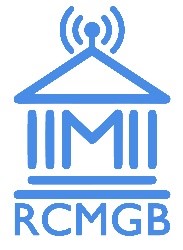About Us
The museum is the brainchild of Steve Haseldine who has been professionally engaged in radio communications and software for over 55 years and as a licensed radio amateur (G8EBM) for over 50 years. Initially the items on display are from his personal collection. Steve was concerned that much of our radio heritage was being consigned to the skip and lost to future generations. With several thousand items of equipment it was felt that now was the time to launch the museum.
Steve is supported by a group of Museum Trustees who are all highly experienced professional electronics and radio engineers who are are also radio amateurs and live and breath radio !
An important aspect of the museum, is engaging with youth. By promoting “hands on” engineering in areas of software development and electronics design. School children and college students, will learn how to solve problems and create software and hardware solutions. Thus not only will we help to create the engineers of tomorrow but also make them enthusiastic about becoming radio amateurs and so make radio communications a key part of their lives. We are already engaging with local schools to establish a series of projects which will support the National Curriculum and provide children with practical experience to let them understand the range of interesting and rewarding careers that exist in the electronics, software and telecommunication industries for both young men and women.
The museum will of course have traditional galleries containing static displays of equipment from spark transmitters to the latest surface mount technology. The focus is radio communication which will include military radios, amateur radios, clandestine or spy radios, professional radios, mobile / cellular telephones, CB radios, Marine and aeronautical radios as well as computer communication using Bluetooth and WiFi. From VLF to microwaves, it will all be covered. Expect to see equipment for all modes, including Morse code, radio teleprinters, AM, FM, SSB, fast and slow scan television, digital data.
There is already a state of the art ESD electronics workshop where people can use some of the oldest and latest test equipment, to restore and repair old radios and build some of the latest surface mount software defined radios and accessories. Youngsters are able to gain “hand on” experience of building electronics under the supervision of experienced engineers, whilst no doubt educating some of the older generation on how to program some of the microprocessor devices. In fact we are running several coding clubs to teach both young and old, how to program devices such as the Raspberry Pi and Arduino computers and, more importantly, how to interface them to electronics to do things such as keeping our radio antennas tracking the International Space Station (ISS).
The operations room has a vast array of radio equipment all available to listen to and for those who bring a copy of their amateur licence, to transmit using equipment from every decade from the 1930s to the present day. Famous manufacturers from radio history including Central Electronics, Collins, Drake, Eddystone, Flexradio, Hallicrafters, Hammarlund, Icom, Kenwood, KW, National, Racal, RCA, Swan, Yaesu and many others are all there fully operational. For vintage AM radio enthusiasts there will be a special area with operational ex military, homebrew and commercial gear from the likes of Labgear and Geloso.
Amateur TV, RTTY, digital modes, satellite and space communications will all be there.
The museum is being run as a “not for profit” organisation and is a registered charity.
